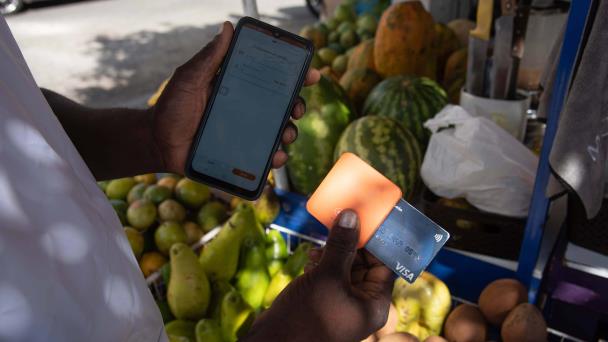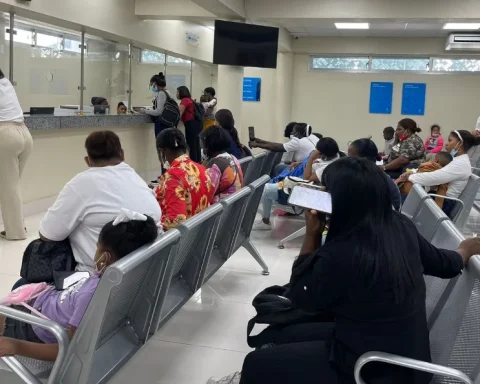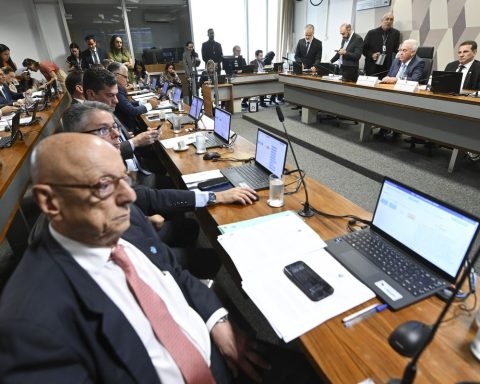Jeune Lucson sells fruits and natural juices on a street in Santo Domingo where most of the people who pass through go to work. Many of them consume the products of Lucson, who was required to accept payments with credit and debit cards in order to stay with his business. Can you imagine paying for a ripe banana with a card?
The diversification of payment methods in the Dominican Republic is consolidated to promote the development of more than 1.5 million micro, small and medium enterprises (MSMEs) registered by the Ministry of Industry, Commerce and MSMEs (MICM), giving their owners the opportunity to bank and increase their sales.
There are different types of tools for payment with cards or electronic transactions, among them: equipment that issues physical invoices, better known as “verifone”; mobile applications that are downloaded to cell phones, tablets or computers, associated with a bank account; and devices for contacting cards, which connect to a digital platform that can be monitored with an electronic device. This last modality is the one that Lucson uses in his fruit stand.
Despite being an informal business, it operates in an organized manner, since the application with which it registers payments allows it to calculate the average sales and the consumption pattern of its clients. To install the service, Lucson opened a savings account at a financial institution with which he was able to request the device and start charging.
By 2015, “verifone” type equipment was offered by only three companies that dominated the electronic payment gateway. There are currently seven, in addition to other alternatives designed to solve the digitization of payment for small businesses.
Payment gateway
MIO is one of the technological platforms that helps small entrepreneurs and merchants to raise the quality of their services, incorporating payment with credit and debit cards, financial organization and banking through an easy-to-use device.
“We promote greater security and transparency with platforms that help improve credit history for access to formal banking”Co-founder of MIO.
The operations carried out in point of sale (POS) terminals, which are the physical or virtual devices for card payment, are registered by the central bank by type of transaction credit, debit, prepaid or subsidiaries.
In this sense, the number of local POS transactions has increased by 22% in August 2022, going from 20,683,283 in August 2021 to 25,301,788 in August this year, according to statistics from the monetary entity.
“There are a lot of people who (have) a card,” says Lucson. For this reason, he decided to include a digital tool in his office that allows him to attract customers who prefer another payment method other than cash.
Another alternative that does not require either plastic or cash is electronic payment, which is in line with the trend of scanning a QR code to display a platform that allows the user to pay online.
“In addition to offering a financial inclusion service, regulated platforms guarantee security for the actors, thanks to a series of companies that provide us with technical support to deal with the issue of cybersecurity. “Co-founder of Yoyo.
The Yoyo company has registered some 4,200 entrepreneurs who use its platform to receive payment from its clients with a quick access mechanism that guarantees transaction security and strengthens online commerce.
Statistics indicate that, with the rise of digitization, consumer confidence in the use of cards in informal businesses has increased. Of the total sales reported in the eighth month of this year, 42% were with credit cards, 40% with debit cards, 17.5% with government subsidy cards and 0.03% with prepaid cards.
The use of services requires internet
Obtaining the new payment methods offered by the actors of the financial system is simple, it includes downloading the digital application of the company with which the merchant decides to digitize his collection process, the provision of personal information such as the ID and the account in which the interested party wants the money from their sales to be deposited. The difference between MIO and Yoyo is that the former requires the acquisition of a device to pass the cards, although it also includes digital payments, and the latter a QR code or link so that the customer can execute the payment of the service from their mobile device or product. The profit margin for each transaction charged is approximately 5%, both for the Yoyo company application and for the payment mechanism with MIO. Both include other variables to determine the commission.
Chance
The segment of MSMEs in the country is made up of beauty salons, spare parts stores, businesses selling cooked food, pharmacies, hardware stores, grocery stores, greengrocers and street vendors, among other types of businesses that together contribute 39% to the gross domestic product (GDP), highlights the MICM.
MSMEs represent 98% of all companies and contribute two million jobs to the labor sector. One of these micro-businesses is the El Choncho rubber company, owned by José Beriguete, a cheerful and witty young man, who has taken advantage of electronic devices to charge for his services on an outpatient basis.
He says that, in his first days with the device for collections, he found a vehicle “locked” by a damaged tire and proceeded to help its young driver. The driver told him that he did not have cash to pay him, to which Beriguete replied: “Don’t worry, I’ll take a card.”
Technology has been an opportunity for Beriguete to digitize its “gomera”, especially home delivery. In addition, it served as an impetus to organize his business, despite the fact that he points out that payment by card is not frequent on some dates.

















